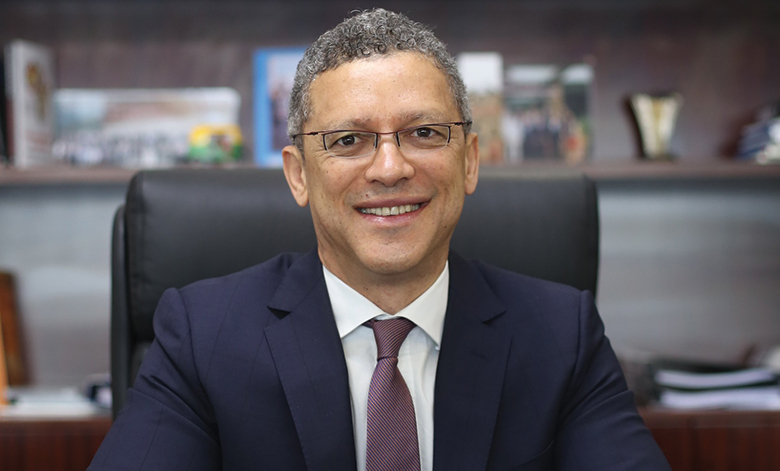The New Development Bank (NDB) is about to get bigger.
Co-owned by Brazil, Russia, India, China and South Africa – the five original Brics nations – the Shanghai-based multilateral is poised to add up to five new member countries to its fold by the end of September.
The NDB’s boards of directors and governors, including its president Marcos Troyjo, met on July 19 to decide on the pace of expansion of the six-year-old institution.
Four countries – a mix of nations from Latin America, Asia, the Middle East and Africa – will definitely join during the next six to eight weeks, with a fifth addition a distinct possibility.
The new members will tick a number of boxes. They will be big and active borrowers from the IMF or the World Bank – in some cases both – and will have a substantial infrastructure deficit in areas such as 5G wireless telecommunications.
Bangladesh is widely tipped to become a new member of the NDB next month. Another strong candidate for inclusion in the expanded multilateral is Egypt, which has made huge strides since it secured an IMF bailout five years ago.
Several Latin America countries, including Colombia and Uruguay, are being lined up for membership, a little further down the line.
Long-term plan
This is all part of a long-term plan, drawn up by the bank on its formation in 2015, but which directors were forced to revisit when Covid struck.
Originally, the NDB wanted to expand its shareholder base during 2020. Instead, it spent much of last year helping founder members ravaged by the pandemic.
It established a $10 billion emergency assistance facility in the second quarter of last year. So far, it has approved $9 billion in emergency loans and disbursed $7 billion.
From the outset, the bank’s intention was to be a global lending institution. By the end of the current decade, it aims to cut the share of issued equity held by its five founders to 55%, from 100%, with the rest collectively owned by a mix of developing countries (25%) and developed nations (20%).
The next four years will be a time of intense growth and change.
We want to be pioneers in sustainable finance and we are aiming to issue a blue bond
Leslie Maasdorp, NDB

Under Troyjo, a Brazilian former deputy economy minister who replaced KV Kamath as head of the bank in July 2020, the NDB wants to be a leader in environmental, social and governance (ESG) investing.
“All of our member countries have net-zero carbon pledges,” says Leslie Maasdorp, who was reappointed for another five-year-term as chief financial officer last month.
Vladimir Kazbekov was named chief operating officer, with Qiangwu Zhou, a former senior Chinese finance ministry official, replacing him as chief administration officer.
The aim, Maasdorp insists, is for 40% of all lending to target climate-specific policies and projects. “We have not in the past reported on climate finance, so we are codifying the definition,” he says.
With half an eye on the United Nations’ COP26 conference, which begins in Glasgow on October 31, the bank is in the final throes of creating a dedicated ESG department.
In March, it priced an Rmb5 billion ($773 million) three-year bond that adheres to the UN’s Sustainable Development Goals.
Maasdorp said the bank was “looking at thematic bonds in the sustainable finance arena that will define our future issuances”. He adds that, while there is no specific issuing timetable in place yet, “we want to be pioneers in sustainable finance and we are aiming to issue a blue bond”.
Last month, the multilateral, rated AA+ by S&P and Fitch, issued a three-year, $2.25 billion pandemic support and sustainable bond that attracted new buyers in the UAE and Indonesia, and drew strong support from central banks.
Lending mix
Another looming shake-up relates to the NDB’s lending mix.
At present, the public sector accounts for 86% of total lending, but during the next four years it wants to cut that share to 70%.
The remaining 30% will be channelled to private-sector projects, via a new internal lending division.
“This will be done with new approaches and instruments, including credit enhancements, risk mitigation of projects and investment environments to crowd in more private-sector finance,” Maasdorp notes.
Another priority will be digital, with the bank tapping “into the potential of new technologies to assist our member countries in their design of green and smart cities”, he adds.
The bank will target sectors including agriculture, health and education services, and new and smarter forms of transport.
The NDB just keeps going and growing. From a standing start in 2015, it has now approved $30 billion to projects across five developing nations and worked with fellow multilaterals to mitigate the impact of Covid. It is also set to move into a new home, in the Shanghai district of Pudong.





